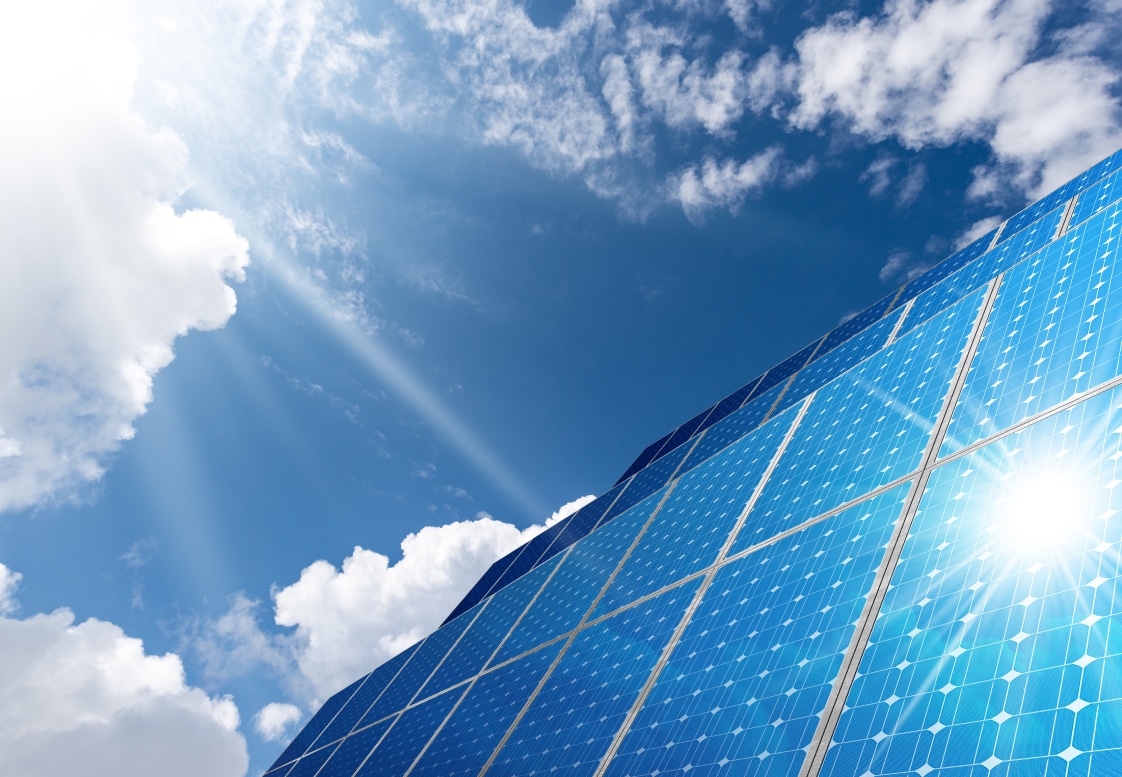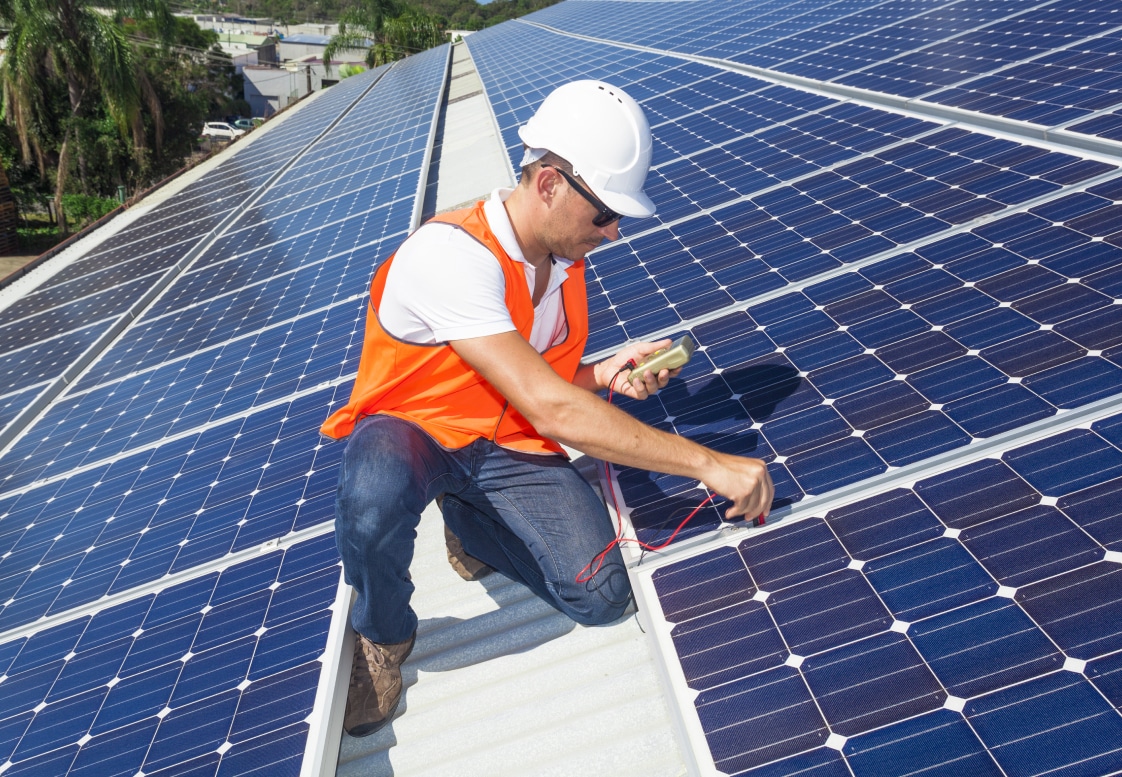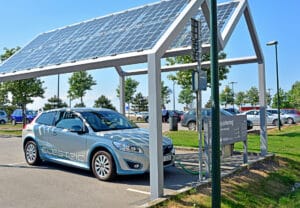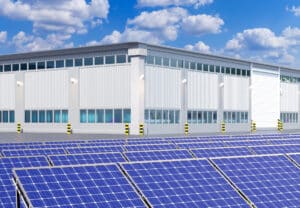Let’s face it – the sun is hard to beat when it comes to sustainable energy sources. It’s accessible from anywhere in the world and expected to last another five billion years.
So there’s no surprise that solar power is one of the fastest-growing renewable technologies. And it’s playing a transformative role in shifting global energy production toward cleaner and safer methods.
The solar energy market doubles every three years, and the global capacity, which hit one Terawatt in 2022, is expected to reach 2.3 Terawatts by 2025. While this power source has been around since the 1970s, its efficiency as a renewable energy source has driven demand significantly in recent years.
This is likely intensified by organizations and companies worldwide recognizing the tremendous importance of sustainable energy production and renewable sources. In 2023, it will become harder and harder to ignore the negative effects of carbon-burning fossil fuels and their impact on our planet. Solar has become one of the most widely embraced options as a reliable and easy-to-implement solution.
While sunlight may be abundant, the rate at which solar panels can convert it into energy varies. To optimize the output of your solar energy system and ensure that you can generate enough power to meet demand, it’s important to understand how to calculate the efficiency of your solar panels. Let’s look at how to calculate solar panel efficiency and everything you need to know before implementing it.
What does solar panel efficiency refer to?
Solar panel efficiency is a measure of how much natural sunlight energy you’re able to convert into usable energy. Today’s solar panels are more efficient than ever, but still cap out at about 22% for high-end residential installations. For most commercial solar panels, efficiency is within the range of 15% to 20%.
While the design and construction of a solar panel will largely determine its maximum efficiency, changeable outside factors also have a significant influence. Efficiency can be affected by the placement and orientation of the solar panels, as well as the weather conditions.
Module vs. Cell efficiency
When discussing solar panel efficiency, it’s important to distinguish between module (or panel) efficiency and cell efficiency.
Module efficiency describes the efficiency of a single solar panel.
Cell efficiency refers to the efficiency of a single solar cell within a panel. There can be anywhere from 36 to 144 solar cells on a single panel.
Because solar systems are sold and operated by the panel, not individual cells, it makes more sense to use module efficiency for most purposes, and that’s what we’ll be focusing on in this article.
What solar panels are the most efficient?
There are several different types of solar panels in widespread use, and they are not all equal when it comes to baseline efficiency:
- Monocrystalline solar panels are made of pure silicon crystals sliced into wafers that make up solar cells. This type of panel can reach efficiency levels as high as 27%.
- Polycrystalline solar panels also use silicon, but their solar cells are made of wafers cut from larger clusters of crystals. Their efficiency is typically between 15% and 22%.
- Thin-film solar panels are made of glass, metal, or plastic panels with a thin covering of photovoltaic material. This kind of panel is cheaper to produce and is about as efficient as polycrystalline panels, but it breaks down faster.
On a positive note, continual improvements in lower-cost solar panel options like thin-film are making them increasingly competitive with more expensive types when it comes to efficiency.
What affects solar panel efficiency?
Unfortunately, it can seem like solar panel efficiency can be degraded by just about everything under the sun. Here’s a rundown of the things that can sap your energy production:
- Wind, hail, ice, and humidity can cause damage to panels.
- Snow can block solar cells from working when it piles up on top of them.
- Rain, in excess, can leave a chemical buildup that reduces efficiency.
- Even the sun itself can cause UV damage to solar cells.
Efficiency is also affected by the panels’ degree of inclination, their orientation, the average temperature and sunshine hours in the area, and the quality of the inverter component that converts solar energy into electricity.
However, there are many ways you can improve solar panel efficiency and avoid the aspects that would typically affect this renewable energy source.
This includes preparing for adverse weather by installing durable materials, placing the solar panels in optimum locations, and regular maintenance and monitoring.
When done correctly, solar panels are one of the best alternatives to fossil fuels.
What is the solar cell IV curve?
Another thing to be aware of is the solar cell IV curve, which is the current and voltage of a cell and helps you determine its output capability and overall efficiency.
The solar radiation absorbed by the cell affects the current (I), while the cell’s temperature has an inverse effect on its voltage (V). By plotting the I-V curve, you can calculate the conditions of maximum efficiency for the cell.
Why is being efficient important?
Energy efficiency means getting as much output as possible from the resources at your disposal. If you’re operating inefficiently, you’ll be spending more money, putting more strain on your equipment, and wasting energy.
When your renewable sources operate inefficiently to meet demand, you must rely on traditional, carbon-emitting energy sources to generate the required output. At a time when we’re more aware than ever of the harmful consequences of climate change and the importance of sustainability, inefficiency can have negative regulatory and reputational implications.
Many organizations are showing their commitment to sustainability by signing on to pledges like Net Zero, which aims to almost entirely eliminate greenhouse gas emissions by 2050. Using renewable energy sources like solar panels and operating them as efficiently as possible is one of the best ways for organizations to progress toward this goal.
How to calculate solar panel efficiency
Efficiency = (Panel Power in Kilowatts) / (Panel Surface Area in Square Meters) x 100%
To determine the efficiency of a solar panel, you just need to know its surface area and power rating. These can be plugged into a simple formula that will calculate the efficiency.
Every solar panel has a power rating that is calculated by measuring its output under standard test conditions, which assume 1 Kilowatt of sunlight energy reaching every square meter of surface. The panel’s documentation should be able to provide you with its power rating, expressed in Watts.
To calculate the surface area of a solar panel, multiply its length by its width. You’ll need to use meters as the unit of measurement for the formula to work.
Then all you need to do is convert the power rating to Kilowatts and divide it by the square meterage of the surface area. This will generate a percentage that tells you how much sunlight energy the solar panel is able to convert into usable energy.
What is the formula for calculating solar panel efficiency?
For example, let’s say we have a one-by-two-meter solar panel with a power rating of 350 Watts. We would divide 0.35 Kilowatts by 2 square meters, giving us a quotient of 0.175, or 17.5% efficiency.
Manage your renewable energy in the most effective way
Solar is as clean and renewable as energy sources get, and it can be an easy and affordable way to move toward a more sustainable generation model. While it’s important to know the baseline efficiency of your solar panels under standard operating conditions, factors like the weather, wear, and installation can greatly impact whether or not they’re producing power at full capacity.
Remote monitoring and management solutions like Galooli can help you maximize the efficiency of your solar panels and other energy assets by giving you real-time visibility into their performance metrics and providing early warnings about inefficiencies related to damage or malfunction.
Request a free demo and see how Galooli’s platform can help you extract as much power as possible from your solar array.




























